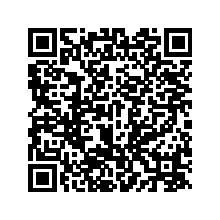Periodic orbit theory in classical and quantum chaos
2018年7月26日 15:00
主讲人 (Speaker): 李继周
主讲人单位 (Speaker's Institute): 华盛顿州立大学
邀请人 (Invited by): 汤柏添
时间 (Time): 星期四, 2018/07/26 - 15:00 to 16:00
地点 (Location): 珠海校区海滨红楼17栋206
摘要 (Abstract):
Quantum chaos (QC) is the subject that bridges the seemingly incompatible phenomena of quantum mechanics (Q) and classical chaos (C). It is well known that chaos, or the “Butterfly Effect”, arises from a deterministic set of differential equations governing the time evolution of classical mechanics, in which initial deviations between nearby trajectories increase exponentially with time, making numerical predictions over long time evolution difficult. On the other hand, the evolution of quantum world obeys the Schrodinger equation, the linear form of which forbids chaos, in any sense similar to classical mechanics, to develop in quantum mechanics. Despite the apparent incompatibility, the classical and quantum world are linked by the Correspondence Principle, which states that the classical analog of a quantum system can be obtained by letting h→ 0. It is therefore meaningful to ask whether the quantum mechanics of some systems is qualitatively different if their classical analogs display chaotic behaviors, compared to those with integrable classical analogs. The answer to this question is positive, and a major purpose of QC is to determine in what ways. One of the powerful tools employed in QC is the semiclassical trace formula, which links the energy spectra of quantum systems to sums over periodic orbits from their classical counterparts. Each periodic orbit is expressed as a wave-like contribution to the orbit sum, with interference governed by the orbits’ classical action functions. We propose a new way of finding the classical actions of periodic orbits, which relies on certain geometric structures such as homoclinic tangles, leading to accurate expressions which evade the exponential divergence problems commonly associated with numerical calculations in chaotic systems.
主讲人简介 (Speaker's CV):
李继周,本科毕业于北京大学物理学院,美国华盛顿州立大学 理论物理学博士(导师为Steven Tomsovic)。研究方向为经 典及量子混沌理论中的异宿、同宿及周期轨道理论 (Heteroclinic, Homoclinic and Unstable Periodic Orbit Theory in Classical and Quantum Chaos)。具体研究对象为半经典求和 公式(如Gutzwiller’s Trace Formula)中长周期轨道经典作用 量(Classical Action)的几何计算方法等。 众所周知,在 经典混沌体系中,由于动力系统的不稳定性,初始状态下任何 微小的偏差都会随时间的增长而指数放大,因此为长周期轨道 的数值计算带来巨大困难。同时,根据Gutzwiller’s Trace Formula,量子体系的能谱(Energy Spectrum),可以用对其 经典极限下对应的经典动力系统中周期轨道求和的方式得出, 其中关键步骤是确定每条周期轨道的经典作用量。低分辨率的 能谱只需要计算短周期轨道,但当分辨率要求较高时,便需要 计算大量的长周期轨道,现存的数值方法尚无法有效解决此类 问题。我们的研究提出一种新几何方法,将周期轨道作用量的 数值计算,转化为对相空间中同宿交错网(Homoclinic Tangle in Phase Space)的面积计算,而后者可以稳定和高效地生成, 从而避开了误差指数增长的难题,也为周期轨道求和时的遍历 (Enumeration)提供可靠的线索。



